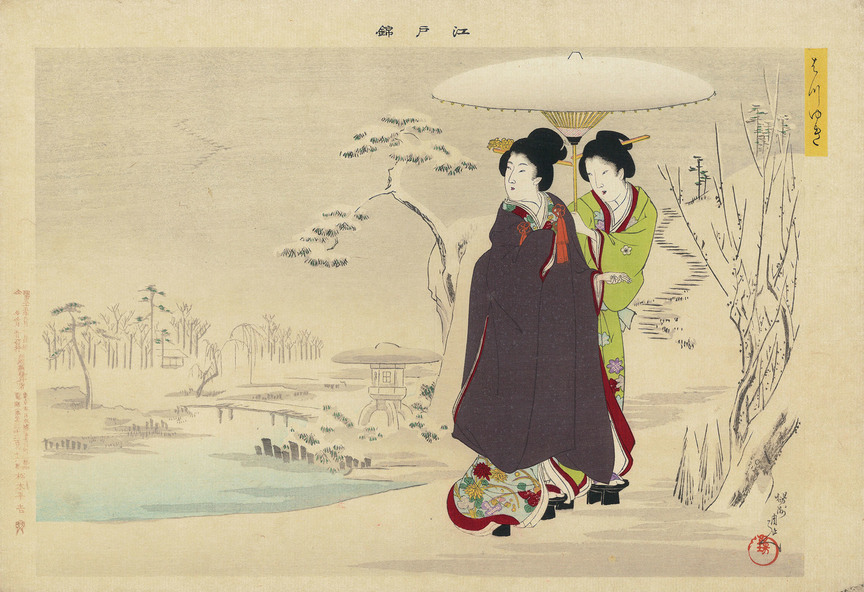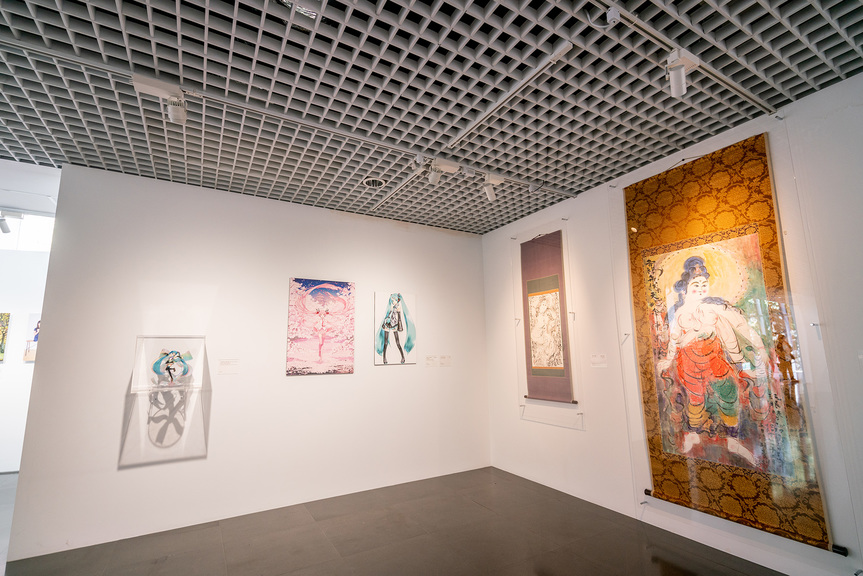-
From Current Issue
-
- Editor’s Letter Fire in the Heart
- Reviews I Gusti Ayu Kadek Murniasih
- Reviews 11th Seoul Mediacity Biennale: “One Escape at a Time”
- Dispatch Networked China
- One on One Monira Al Qadiri on Yukio Mishima
- Essays The rise of independent art spaces in pandemic-era Shanghai
- Features Tuan Andrew Nguyen
- Table of Contents
- Web Exclusives
- Archive
- Subscribe

R
E
V N
E
X
T
Installation view of “Bishojo: Young Pretty Girls in Art History,” at the Museum of National Taipei University of Education (MoNTUE), Taipei, 2019. Photo by Jane Long. Courtesy MoNTUE.
Beautiful women filled three floors of The Museum of National Taipei University of Education (MoNTUE) under the auspices of “Bishojo: Young Pretty Girls in Art History.” Presenting over 200 prints, paintings, sculptures, videos, and mass-market items like book covers and board games, the exhibition departed from the Japanese colloquial term bishojo—connoting attractive pre-pubescent women—and attempted to contextualize this contemporary archetype within Japanese art history, from the Edo period to the present. Originally organized in 2014 by three Japanese museums in Aomori, Iwami, and Shizuoka, this 2019 iteration, with additional new commissions, emphasized the sheer volume and formal consistency of bishojo depictions across time. Yet, the exhibition ultimately highlighted the aesthetic connections between various images without critically acknowledging the social conditions that enabled the sexualization of young girls by male artists as a form of celebrated cultural expression.
The first and largest of the three galleries opened with Yoshitomo Nara’s acrylic painting Last Right (1994). Portraying a thickly outlined, dark-haired girl in a pink dress with a sullen expression directed at the viewer, Last Right asserts how young girls are not only subjects to be projected upon, but are capable of staring back. Beyond Nara’s suggestion of complexity, the rest of the gallery display proceeded with a pedagogical tone, plodding through Edo-period ukiyo-e woodblock prints of young women’s everyday life, to 1930s nihonga paintings of women playing sports, one of the only public activities women had access to. The wall text described these athletic depictions as “strong and powerful,” glossing over how these depictions of young girls in both private and public spaces were circulated and fetishized.
A few young girls defy conventions as they burst from 1960s avant-garde angura theater posters by Tadanori Yokoo, Masamichi Oikawa, and Akira Uno. The curators’ thoughtful juxtaposition of Edo woodblock prints and these silkscreen posters highlighted a dramatic shift in how popular images of women could present subversive alternatives to long-held expectations of demure femininity. Angura posters harken a radical community of artists critiquing the sanitized facade of Japan constructed around the 1964 Olympics. The young women depicted in these posters are decidedly strange, with drooping eyes, gaping mouths, and bodies stretched beyond imaginable proportions. Though the artists behind these riotous depictions are men (as are over four-fifths of the artists exhibited), these posters were among the few works that complicated the notion of bishojo.
Transhistorical comparison between the chronologically diverse objects on view was utilized to varying degrees of effectiveness. An exemplary pairing was folk-artist Shiko Munakata’s depiction of the Shinto goddess Banzaiten (1966) with adjacent 2019 digital renderings of the popstar avatar Hatsune Miku, whom a man married last year. These works exemplified the enduring tendency for the female form to be cast as an object of worship. However, more superficial connections took center stage. Hisaji Hara’s untitled sepia-toned photographic re-enactments of Balthus’s famed paintings of girls were placed in dialogue with Manabu Koga’s newly commissioned, lifeless images of herself floating in various Taipei metropolitan areas, though ancillary materials contextualizing Hara’s appropriation or Koga’s locations were absent. The third floor presented a rare opportunity to see masterly nihonga paintings alongside manga-style figurines by Takashi Murakami and Mr., but, again, other than a description of how the girls depicted were doll-like and “purely for viewing,” a greater emphasis on the works’ contexts was needed.
Makoto Taniguchi’s wall-based Untitled (2014) features a boxy wood frame holding a mirror and a top panel of transparent acrylic plastic. Painting directly on the plastic, Taniguchi’s under-layer features a pale, doe-eyed child with straight, teal hair in a few deliberate acrylic strokes. Her lithe figure is barely delineated with wisps of dark gray. This figure is reflected on the mirror, smiling sweetly at the viewer. Layering on top of this avatar, Taniguchi piles on thick paint globules that droop like chewed gum. A Dorian Gray-esque nightmare, the girl on the plastic surface appears to be melting, jarring with her kawaii shadow. The disintegrating version deals not in adorability, but in an interiority that finally rings true in an exhibition of superficially sweet avatars and projections.
“Bishojo: Young Pretty Girls in Art History” is on view at the Museum of National Taipei University of Education until November 24, 2019.
To read more of ArtAsiaPacific’s articles, visit our Digital Library.

















